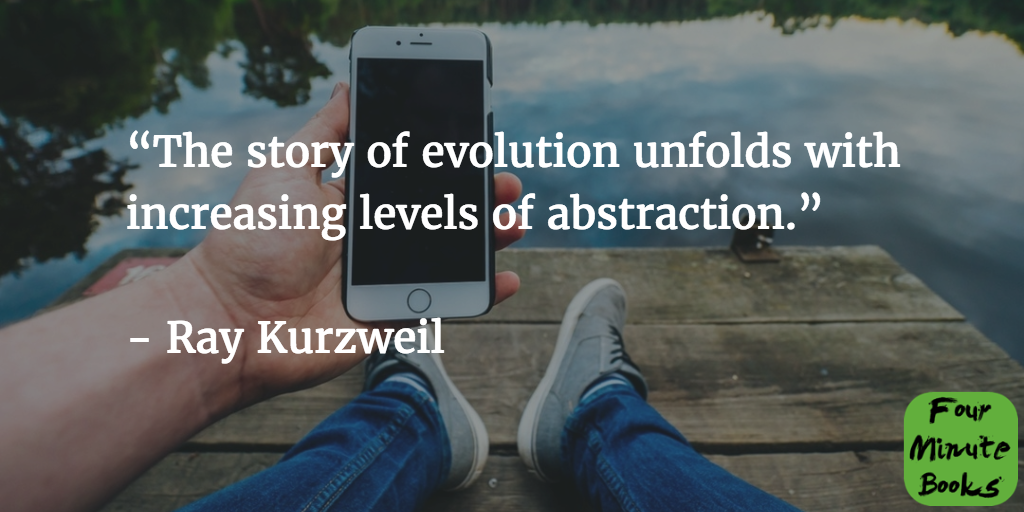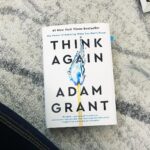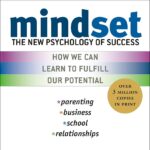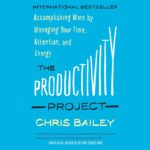
Have you ever wondered what truly makes us conscious, creative, or even capable of thought? If you’re searching for a deep, yet accessible explanation of how the human mind works—and how we can replicate it in machines—“How to Create a Mind” offers a compelling and well-researched answer. This book isn’t just theory—it’s a roadmap for building human-like intelligence in artificial systems. Whether you’re curious about AI, cognitive science, or the future of human-machine integration, this summary has the insights you’re looking for.
📌 The short answer: Ray Kurzweil’s core idea is that the brain functions through hierarchical pattern recognition, and by modeling this architecture, we can build truly intelligent machines. The book gives both a vision and a plan for the creation of conscious, thinking AIs—while grounding everything in current neuroscience and decades of invention.
🧠 So, if you’re asking: “How can we create a mind?”
✅ Answer: By understanding how the neocortex works as a pattern recognizer—and replicating its structure through intelligent algorithms.
Buy How to Create a Mind®at: Amazon (affiliate link)
How to Create a Mind Summary: What the Book Is Really About
Have you ever wondered how the human brain actually thinks? Or how machines might one day match our intelligence? In his fascinating book How to Create a Mind, futurist and inventor Ray Kurzweil argues that the key to understanding the brain—and building true artificial intelligence—comes down to one powerful concept: patterns.
Kurzweil believes that the brain, especially the neocortex, operates through roughly 300 million pattern-recognition modules. These modules detect basic sensory input (like the shape of a letter) and build them into more complex layers (like words, thoughts, and creativity). By decoding how this system works and replicating it through algorithms—particularly using Hierarchical Hidden Markov Models (HHMMs)—we may be able to build machines that learn, adapt, and even exhibit consciousness.
The Book’s Connection to Artificial Intelligence

Kurzweil argues that understanding how the human brain works is the key to developing true Artificial General Intelligence (AGI)—a form of AI that can learn and think like a human, or even surpass human intelligence.
How to Create a Mind bridges neuroscience, computer science, and AI, offering a compelling vision of a future where machines not only simulate the human mind but also integrate with it.
Key AI-related insights from the book include:
- A detailed explanation of how insights from the human brain can be applied to build more advanced AI systems.
- The possibility of digitally replicating the human brain in the future.
- A discussion of consciousness, memory, and learning from a computational perspective.
- The idea that progress in AI will enhance human capabilities through human-machine integration.
If you’re interested in the intersection of human and artificial intelligence, this book offers a powerful and thought-provoking foundation.
5 Key Takeaways from How to Create a Mind
- The Brain Is a Pattern-Recognition Machine
The neocortex doesn’t store information like a hard drive; it recognizes and processes patterns in a hierarchical, layered way. - Understanding the Neocortex = Building AI
Kurzweil suggests that by modeling the brain’s architecture, especially the neocortex, we can create AI systems that mimic human intelligence. - HHMMs: The Building Blocks of Thought
Hierarchical Hidden Markov Models are mathematical frameworks that can replicate how the brain learns and predicts based on past inputs. - Free Will vs. Prediction
While our actions feel autonomous, Kurzweil argues that they are highly predictable based on pattern recognition and prior experience—just like in machines. - The Future of Intelligence Is Hybrid
Kurzweil envisions a future where human brains and AI systems merge, enhancing memory, creativity, and problem-solving in ways never before possible.
Why This Book Matters
Whether you’re interested in AI, neuroscience, or philosophy, How to Create a Mind offers a bold synthesis of complex ideas. It reframes intelligence not as magic, but as emergent structure. This shift has implications—from how we design machines to how we understand memory, creativity, and identity.
Personal Reflections
Kurzweil’s theory felt like reconstructing the mind from scratch—from pattern to thought to meaning. The model of hierarchical recognizers is compelling and intuitively addictive. However, some of his more speculative predictions—like emerging consciousness or mind uploading—felt less concretely supported. Still, they pushed me to think differently about what intelligence even is.
If you enjoyed this summary, you might also like:The Tenant of Wildfell Hall
About the Author: Ray Kurzweil
Ray Kurzweil is a world-class inventor, thinker, and futurist, with a thirty-five-year track record of accurate predictions. He has been a leading developer in artificial intelligence for 61 years—longer than any other living person.

He was the principal inventor of the first CCD flat-bed scanner, omni-font optical character recognition, print-to-speech reading machine for the blind, text-to-speech synthesizer, music synthesizer capable of recreating the grand piano and other orchestral instruments, and commercially marketed large-vocabulary speech recognition software.
Ray received a Grammy Award for outstanding achievement in music technology; he is the recipient of the National Medal of Technology and was inducted into the National Inventors Hall of Fame. He has written five best-selling books including The Singularity Is Near and How To Create A Mind, both New York Times bestsellers, and Danielle: Chronicles of a Superheroine, winner of multiple young adult fiction awards.
His forthcoming book, The Singularity Is Nearer, will be released June 25, 2024. He is currently a Principal Researcher and AI Visionary at Google.
Notable Quotes from How to Create a Mind

“Our ability to create virtual worlds in our minds is what distinguishes us as a species.”
“The brain is a self-organizing system, and it does not require a blueprint.”
“Reverse-engineering the human brain may be regarded as the most important project in the universe.”
“Our thinking, our choices, our identities—they all emerge from patterns.”
“By understanding the human brain, we will unlock the power to recreate and enhance it.”
Final Thoughts: Unlocking the Blueprint of Human Intelligence
Imagine holding the blueprint to the most complex machine in the known universe—your own brain. That’s exactly what How to Create a Mind offers: not just a glimpse into how our minds work, but a roadmap for how we might one day replicate—or even enhance—human intelligence through technology.
Reading this book isn’t just about understanding neuroscience or artificial intelligence; it’s about rethinking what it means to be human. Ray Kurzweil doesn’t simply ask us to consider the future—he invites us to build it. His arguments are bold, often controversial, and incredibly thought-provoking. Whether or not you agree with all his predictions, it’s hard to walk away from this book without feeling like your mind has expanded just a little.
In a world where AI is advancing at lightning speed, this book feels more relevant than ever. It empowers us to see intelligence not as a fixed trait, but as a pattern—a system we can understand, replicate, and maybe even improve. It challenges us to think bigger about consciousness, creativity, and the untapped potential of the human mind.
So if you’ve ever wondered how your thoughts are formed, how machines might one day think like us, or what separates human intuition from artificial logic—How to Create a Mind is your next must-read. It’s not just a book. It’s a mind-expanding journey into the architecture of thought itself.
🎧 Ready to dive deeper?
Listen to How to Create a Mind on Audible or grab the physical copy now:
👉 Get it on Amazon (affiliate link)
Frequently Asked Questions About How to Create a Mind
Q1: What is the main idea of How to Create a Mind?
A: The book explores how the human brain processes information and how we can model its functioning to create intelligent machines. Ray Kurzweil introduces the “Pattern Recognition Theory of the Mind,” suggesting that the brain recognizes and builds on patterns to create thought, memory, and consciousness.
Q2: Is this book suitable for readers without a background in neuroscience or AI?
A: Absolutely. While it delves into complex topics, Kurzweil explains them in an accessible and often engaging way. Readers who are curious about the brain, technology, and the future will find it thought-provoking, even without prior technical knowledge.
Q3: Does Kurzweil believe artificial intelligence will surpass human intelligence?
A: Yes, he predicts that AI will not only match but eventually exceed human intelligence—a moment he refers to as “The Singularity.” He believes this could happen within a few decades and argues that understanding the brain is key to making it a reality.
Q4: What makes How to Create a Mind different from other books on AI?
A: Kurzweil combines scientific insights with philosophical questions and personal anecdotes. Unlike purely academic texts, his work connects the dots between neuroscience, computer science, and the human experience.
Q5: Who should read this book?
A: This book is ideal for thinkers, technologists, futurists, neuroscientists, entrepreneurs, and anyone curious about consciousness and the future of human-machine interaction.
Q6: Are the predictions in the book still relevant today?
A: While some timelines may seem ambitious, many of Kurzweil’s predictions have proven accurate over time. The fundamental ideas remain highly relevant in today’s AI-driven world.
Q7: Does the book discuss ethical concerns about AI and consciousness?
A: While not the main focus, Kurzweil does touch on ethical implications of AI, including identity, free will, and what it means to be conscious in a world of intelligent machines.
Q8: Will this book help me understand how my own mind works?
A: Yes. One of the book’s strongest points is how it connects artificial models to the natural brain, giving readers a deeper understanding of how we think, learn, and remember.
Q9: Is there an audiobook version available?
A: Yes, you can listen to How to Create a Mind on Audible, narrated in a clear, engaging voice. 👉 Listen here (insert your affiliate link).
Related Articles from BetterSelfReads.com
- 8 Powerful Mental Health Benefits of Reading Daily: How Books Can Heal Your Mind
- Speed Reading Strategies to Consume Life-Changing Books Faster
- How Changing One Habit Can Lead to Massive Life Changes
- How to Talk to Anyone Leil Lowndes Review: Master the Secrets of Confident Connection
- The Life-Changing Magic of Tidying Up Summary – Marie Kondo




